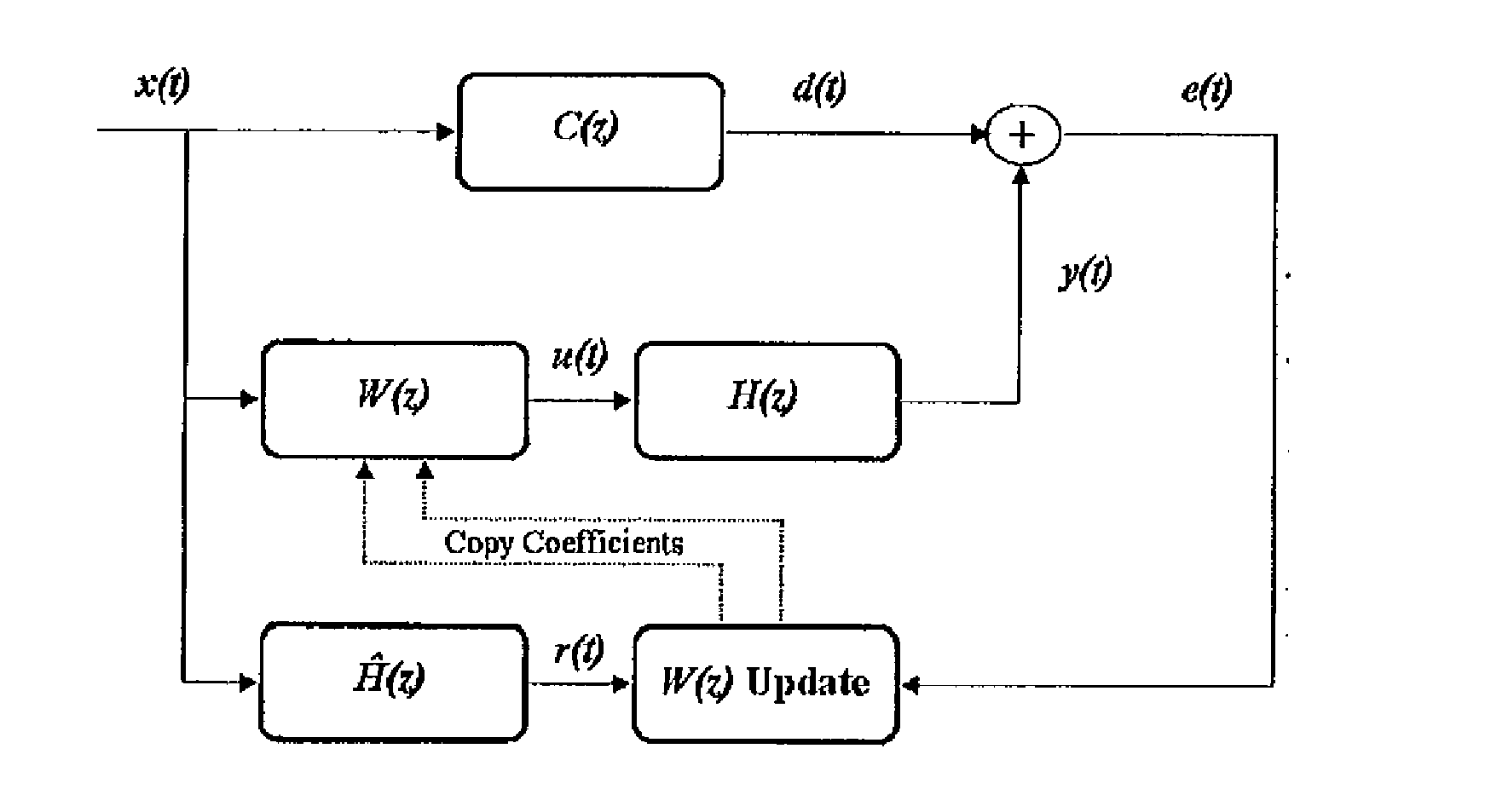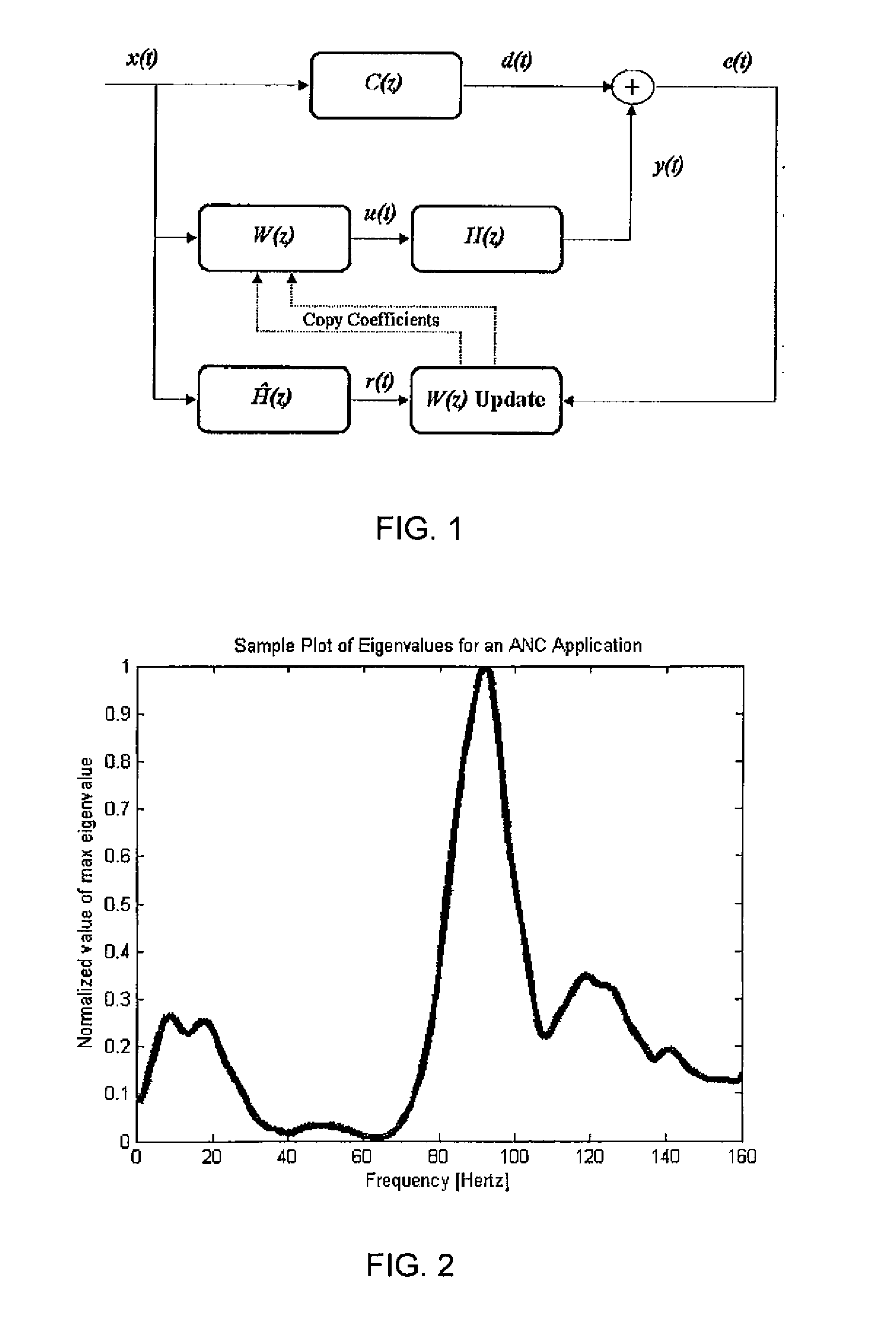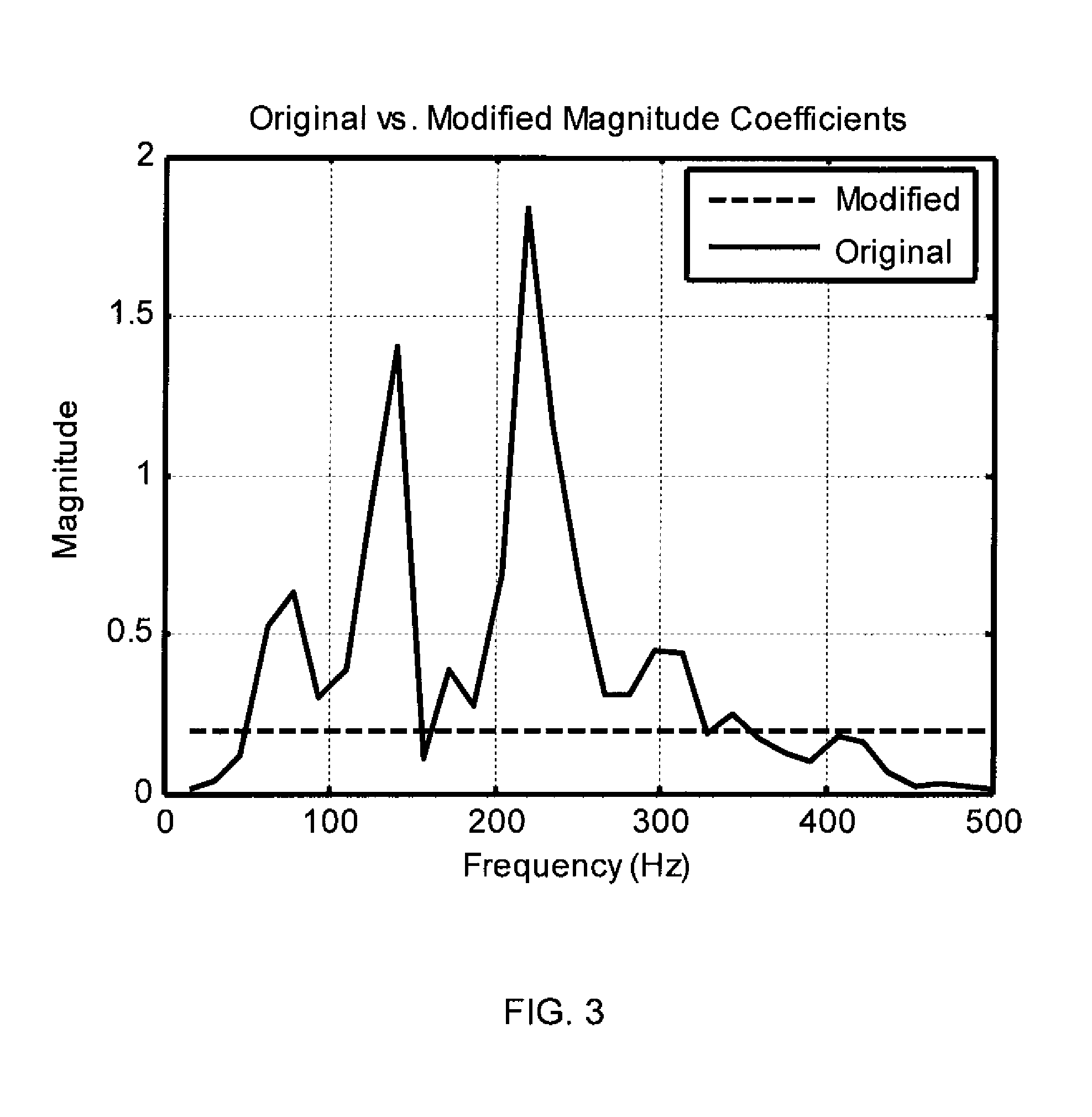Secondary Path Modeling for Active Noise Control
a technology of active noise and path modeling, applied in adaptive control, computer control, instruments, etc., can solve the problems of repetitive noise or vibration that can become extremely annoying, unsatisfactory noise for a long time, work fatigue and other serious medical conditions, and achieve the effect of minimizing the noise in the system and minimizing the noise associated
- Summary
- Abstract
- Description
- Claims
- Application Information
AI Technical Summary
Benefits of technology
Problems solved by technology
Method used
Image
Examples
Embodiment Construction
Definitions
[0018]In describing and claiming the present invention, the following terminology will be used in accordance with the definitions set forth below.
[0019]The singular forms “a,”“an,” and, “the” include plural referents unless the context clearly dictates otherwise. Thus, for example, reference to “a filter” includes reference to one or more of such filters, and reference to “model” includes reference to one or more of such models.
[0020]As used herein, the term “secondary path” refers to the effects or an estimate of the effects of the physical propagation of a signal. The secondary path may include effects of digital-to-analog converters, reconstruction filters, audio power amplifiers, loudspeakers, the acoustic transmission path, error sensors, signal conditioning, anti-alias filters, analog-to-digital converters, etc.
[0021]As used herein, the term “adaptive filter” refers to a filter that self-adjusts its transfer function according to an optimizing algorithm.
[0022]As use...
PUM
 Login to View More
Login to View More Abstract
Description
Claims
Application Information
 Login to View More
Login to View More - R&D
- Intellectual Property
- Life Sciences
- Materials
- Tech Scout
- Unparalleled Data Quality
- Higher Quality Content
- 60% Fewer Hallucinations
Browse by: Latest US Patents, China's latest patents, Technical Efficacy Thesaurus, Application Domain, Technology Topic, Popular Technical Reports.
© 2025 PatSnap. All rights reserved.Legal|Privacy policy|Modern Slavery Act Transparency Statement|Sitemap|About US| Contact US: help@patsnap.com



